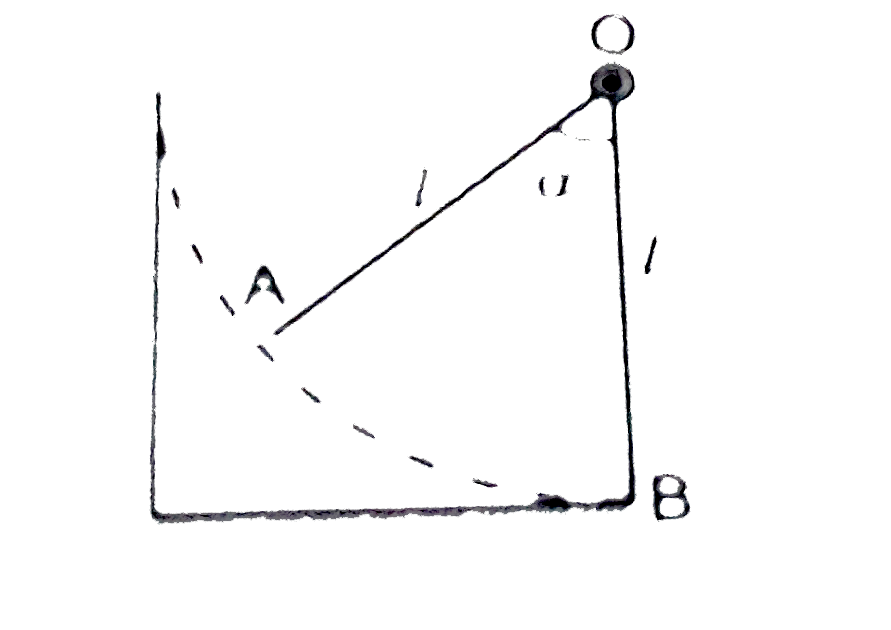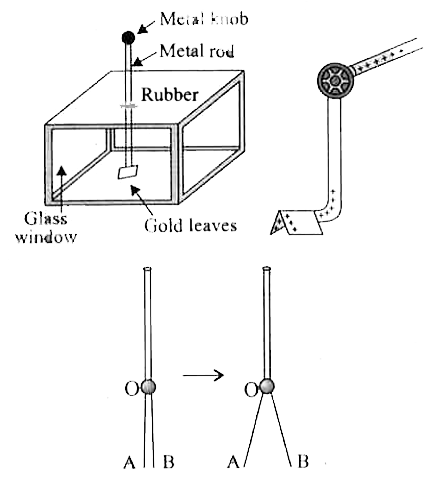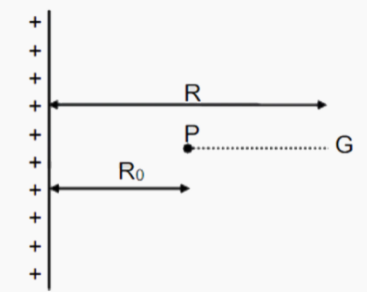Let E1(r), E2(r) and E3(r) be the respectively electric field at a distance r from a point charge Q, an infinitely long wire with constant linear charge density λ, and an infinite plane with uniform surface charge density σ. If E1(r0)=E2(r0)=E3(r0) at a given distance r0, then
Q=4σπr20
r0=λ2πσ
E1(r0/2)=2E2(r0/2)
E2(r0/2)=4E3(r0/2)
The correct Answer is:C
Step by step video solution for Let E_1(r), E_2(r) and E_3(r) be the respectively electric field at a distance r from a point charge Q, an infinitely long wire with constant linear charge density lambda, and an infinite plane with uniform surface charge density sigma. If E_1(r_0)=E_2(r_0)=E_3(r_0) at a given distance r_0, then by Physics experts to help you in doubts & scoring excellent marks in Class 12 exams.
Updated on:21/07/2023Topper's Solved these Questions
- ELECTROSTATICSBook:RESONANCE ENGLISHChapter:ELECTROSTATICSExercise:Part - II
Explore 23 Videos
- ELECTROSTATICSBook:RESONANCE ENGLISHChapter:ELECTROSTATICSExercise:HLP
Explore 38 Videos
- ELECTROSTATICSBook:RESONANCE ENGLISHChapter:ELECTROSTATICSExercise:Part - IV
Explore 9 Videos
- ELECTROMAGNETIC INDUCTIONBook:RESONANCE ENGLISHChapter:ELECTROMAGNETIC INDUCTIONExercise:A.l.P
Explore 19 Videos
- EXPERIMENTAL PHYSICSBook:RESONANCE ENGLISHChapter:EXPERIMENTAL PHYSICSExercise:PART -II
Explore 10 Videos
Similar Questions
An electric charge 10−3μC is placed at the origin (0, 0) of xy-coordinate system. Two points A and B are situated at (√2,√2)and(2,0), respectively. The potential difference between the points A and B will be
View SolutionAn electrometer consister of a fixed vertical metal bar OB at the top of which is attached a thin rod OA which gets deflected from the bar under the action of an electric charge (fig.). The rod can rotate in vertical plane about fixed horizontal axis passing through O. The reading is taken on a quadrant graduated in degrees. The length of the rod is l and its mass is m. what will be the charge when the rod of such an electrometer is deflected through an angle α in equilibrium. Find the answer using the following two assumptions :
The charge on the electrometer is equally distributed between the bar & the rod and the charges are concentrated at point A on the rod & at point B on the bar.

View SolutionA leaf electroscope is a simple apparatus to detect any charge on a body. It consist of two metal leaves OA and OB, free to rotate about O. Initially both are very slighty separted. When a charged object is touched to the metal knob at the top of the conduction re, charge flows from knob to the top of the conduction rod, charge flows from knob to the leaves through the conducting rod, charge flows from knob to the leaves through the conduction rod. As the leaves are now charged similarly, they start repelling each other and tet separted (deflected by certain angle).

The angle of deflection in static equilibrium is an indicator of the amount of charge on the charged boy.
When a+20C rod is touched to the knob, the deflection of leaves was 5∘, and when an identical rod of −40C is touched, the deflection was found to be 9∘. If an identical rod of +30C is touched, then the deflection may be:
View SolutionA long thin wire carrying a varying current I=i0sinωt lies at a distance y above one edge of a rectangular wire loop of length LandW lying in the x−z plane. What emf is induced in the loop?

View SolutionTwo full turns of the circular scale of a screw gauge cover a distance of 1 mm on its main scale. The total number of division on the circular scale is 50. Further, it is found that the screw gauge has a zero error of −0.03 mm while measuring the diameter of a thin wire, a student notes the main scale reading of 3 mm and the number of circular scale division in line with the main scale as 35. The diameter of the wire is
View SolutionA charge particle q is released at a distance R∘ from the infinite long wire of linear charge density λ. Then velocity will be proportional to (At distance R from the wire)

View SolutionCharges Q, 2Q and 4Q are uniformly distributed in three dielectric solid spheres 1, 2 and 3 of radii R//2 , R and 2R respectively, as shown in figure. If magnitude of the electric fields at point P at a distance R from the centre of sphere 1,2 and 3 are E_1, E_2 and E_3 respectively, then
View SolutionLet E1(r), E2(r) and E3(r) be the respectively electric field at a distance r from a point charge Q, an infinitely long wire with constant linear charge density λ, and an infinite plane with uniform surface charge density σ. If E1(r0)=E2(r0)=E3(r0) at a given distance r0, then
View SolutionElectric field at a point of distance r from a uniformly charged wire of infinite length having linear charge density lambda is directly proportional to
View Solutionरेखीये आवेश घनत्व λ वाले अनंत लम्बाई के आवेशित तार से r दुरी पर वैधुत क्षेत्र की तीव्रता का सूत्र लिखिए।
View Solutionσ आवेश घनत्व वाले किसी अपरिमित समरूप आवेशित अचालक पृष्ठ से r दूरी पर स्थित किसी बिन्दु क्षेत्र की तीव्रता होती है।
View SolutionElectric field due to an infinite non-conducting sheet of surface charge density sigma , at a distance r from it is
View SolutionWrite the expression of electric field due to an infinitely long, straight, wire having linear charge density λ at a point that is at a distance r from it.
View Solutionरेखीय आवेश घनत्व λ का वहन करने वाले किसी अनंत बेलन की त्रिज्या r0 है। उस बेलन के लिए समविभव पृष्ठ का समीकरण क्या है?
View SolutionA charge particle q is released at a distance R∘ from the infinite long wire of linear charge density λ. Then velocity will be proportional to (At distance R from the wire)
_2019_CBT2_E01_009_Q01.png)
View Solutionएक बिन्दु आवेश Q, एक एकसमान रेखीय आवेश घनत्व (Linear charge density) λ . वाले अनन्त लम्बाई के तार तथा एक एकसमान पृष्ठ आवेश घनत्व (uniform surface charge density) σ वाले अनन्त समतल चादर के कारण r दूरी पर विद्युत क्षेत्र की तीव्रतायें क्रमशः E1(r),E2(r) तथा E3(r) हैं। यदि एक दी गई दूरी r0 पर E1(r0)=E2(r0)=E3(r0) तब
View Solution
